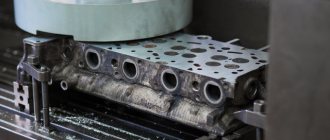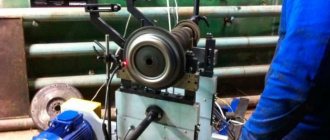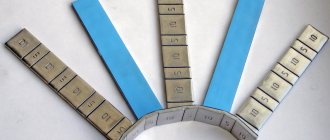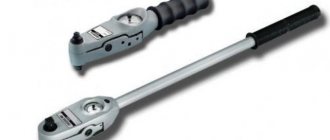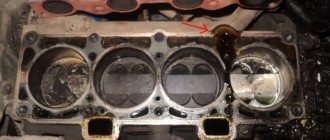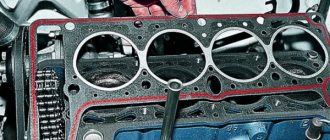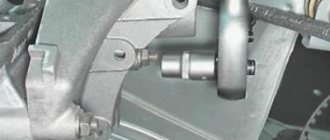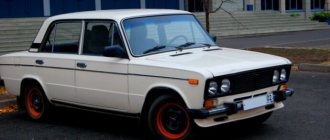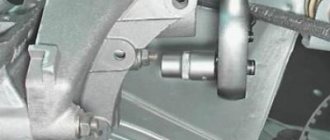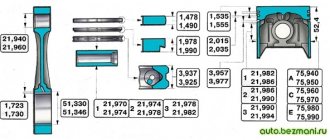Economical car enthusiasts, or those who are accustomed to performing all repair operations with their own hands, think about boring the cylinder block themselves. In this regard, most drivers immediately have a question: how advisable is it to carry out such a procedure, which cannot be called easy, in a garage box? After all, grinding a block without special equipment and certain skills is quite problematic. In addition, it is impossible to be completely sure of the accuracy of this procedure, but still many car owners undertake boring the cylinder block at home.
Note that experienced mechanics do not approve of such a procedure. Although it can be used as a last resort to restore the performance of motorcycle or moped engines. There are several ways to bore the cylinder block of an automobile power unit, each of which requires certain efforts and costs. Still, it is best to perform this procedure on a special boring machine, since in this case the risk of damaging the block is minimized. On a machine you can get an ideal cylinder bore (if it is done by a professional), but with manual execution such results are unlikely to be achieved.
Undeniable economic benefit
At the same time, the cost of boring makes it much more profitable than purchasing a new similar block. There is no great need to expand the cylinders only for the owner of a Soviet car made in the 1980s and 1990s, any spare parts for which can be found almost free of charge.
What is better - buy a contract motor or have the block bored?
If a car enthusiast has acquired a Mercedes that is far from old, then a new BC will be very, very expensive for him.
The purchase of a contract unit proposed in such cases will not allow achieving significant savings.
- It is unlikely that it makes any sense at all, since it would be much simpler and more far-sighted to pay an additional approximately 150 thousand rubles for a completely new block, and even with “zero” pistons.
- But boring a worn-out imported block will cost significantly less and will not bring those surprises that usually upset seasoned contract blocks or those that have been in accidents.
What is it done for?
As I wrote before (20-30 years ago), the main task was repairs. It is worth noting that the power unit and all its main parts experience constant loads, these are cylinders, pistons, rings, crankshaft, camshaft (shafts), valves, liners, etc.
The piston has especially strong loads; it rubs against the cylinder of the block, and this process is repeated hundreds - thousands of times in just one minute. This is where maximum wear occurs, the metal of the walls is ground off, and the block begins to lose its original round shape. If you exaggerate it, it becomes oval, not round. The fit of the pistons (namely its rings) to the walls begins to deteriorate, accordingly, the combustible mixture or exhaust gases begin to flow into the crankcase, and oil, on the contrary, into the working chamber - the power drops, the power unit begins to “eat oil”! Gray (bluish) smoke begins to fly from the muffler . These are the first bells.
To be fair, sometimes compression rings get stuck, compression will also drop and smoke will start pouring out, you will definitely need to open the engine and figure it out
Previously, there were no normal oils, they thickened wildly in winter, burned in summer, lubricity was low - engines had to be “overhauled” after 30 - 50,000 miles, and trucks only more often. In winter (oddly enough) the units overheated, all because, again, there were no normal antifreeze or antifreeze, they poured water that froze, forming traffic jams here and overheating was not far away, albeit local, even if not for long - BUT THIS WAS ENOUGH.
Now technology has stepped FAR forward. There are various semi-synthetic or synthetic formulations, not only of oils, but also of coolants. Therefore, now the engine runs for a long time! The resource from repairs has increased many times, if not tens of times.
Of course, after 250,000 (on average) kilometers there will still be repairs, but just think about the mileage! Medium-sized cities rarely get 15,000 people a year, so 250,000 will last about 15 years.
The first reason is, you guessed it repair , if possible (more on this below), the oval shape or scuffs inside the cylinder are removed by boring, more pistons are installed and the engine lives for many more thousands of kilometers.
The second reason is simply an increase in volume. Again, if the block (or rather its walls) allows, boring occurs, pistons of larger diameter are installed, they have a greater ability to suck in the air-fuel mixture. If you exaggerate a piston with a diameter of 79.8 mm, it will suck in much less than with a diameter of 82 mm. The fuel burns more, and accordingly the pressure of the ignited mixture on the piston is higher, so you get an increase in power. THEY MAKE MAINLY tuners for pumping up their “iron” horses.
Real opportunity to increase power
Effectively boosting a motor requires lengthy engineering calculations and the most accurate implementation of the drawn up project. At the same time, it is important to be aware that not all types of engines allow any kind of pumping.
Noticeable changes in the dynamics of the car will appear even with an expansion of the cylinder diameter by only 2 mm. This will be quite enough to increase the pressure of the gases on the pistons.
We offer profitable engine boring
If the engine, practically its heart, breaks down in a car, then further operation of such a vehicle is physically impossible. You need to find a suitable service center that will help solve the problem. offers its services in the field of propulsion system repair. Our specialists carry out engine restoration regardless of the complexity of the task. Extensive experience and a high level of qualifications help in this. At the same time, the price is always affordable. The website provides a complete list of services; you can obtain additional information from the managers in any convenient way.
Some difficulties of engine tuning
True, in order to ensure this result, it will be necessary to intervene in the arrangement of air and gas lines, and to alter the fuel and exhaust mechanisms.
In the easiest case of tuning, you can simply replace the connecting rods with longer ones and install repair sleeves, pre-bored to the required parameters.
Why bore the cylinder block?
Tuning is often done when the need for a thorough restoration of the cylinders is discovered. Most often, a pleasant increase in traction is combined with useful repairs if the BC diagnostics reveal:
- Severe distortion of the original configuration;
- Deviations in the diameter value;
- Critical accumulation of defects, including burrs and scratches.
Erasing the cylinder with piston rings
A typical reason for distortion of the factory geometry at a certain stage of the run is the friction of the rings on the glass. Under the influence of the pistons, it acquires an oval or conical shape.
This defect cannot be detected with your own eyes, but high-precision instrumental measurements can reveal it.
Indirect signs of the appearance of an ellipse
In a number of cases, the fact that the cylinder is no longer round can be guessed by the following deviations from the standard parameters:
- Reduced compression;
- Excessive consumption of engine oil;
- Oil clogging of spark plugs;
- Exhausts acquire a bluish tint.
Modification of the cylinder head on the VAZ 2109 (8 valves)
The design of any internal combustion engine, including VAZ 2109 engines with 8 valves, requires the following components:
- The combustion chamber;
- Valve mechanism;
- Cast lines;
- Exhaust manifolds;
- Intake manifolds.
If you bore and correct the current state of the manifold and cylinder head channels, you can increase the cylinder filling ratio, which leads to increased efficiency and engine power. It is not uncommon for modifications to be performed as the final stage in increasing the volume of the internal combustion engine.
Object of improvement
Ways to eliminate deformations and defects
To correct this situation, use BC boring and installation of repair caliber rings on the pistons. These measures allow us to solve the problem of significant expansion of the glass. In some cases, the block is first bored to the required diameter, and then replacement sleeves are installed into it.
- Due to the fact that the piston constantly moves in the cylinder, the smooth surface of the glass becomes covered over time with a wide range of various types of flaws. As a rule, they look like burrs and scratches.
- Similar damage is also typical for pistons and their components. To correct such deformations, the glass is not only bored, but also honed, that is, polished using abrasive substances.
Why bore channels in the cylinder head?
The channel boring procedure is performed in order to increase the power parameter of the power unit at higher speeds. If tuning is necessary, the procedure is performed in the same way, only the owner of the car needs to select the amount of grinding of the cylinders. In this case, there is no need to remove oval shapes on the cylinder head. After boring and installing large-sized pistons, you can achieve an increase in the power parameter.
The larger the piston size, the more combustible mixture can enter the engine. Accordingly, the more fuel is burned during the operation of the internal combustion engine, the greater the pressure will be when the mixture ignites. This causes the power parameter to increase.
Finding a well-equipped workshop
It is better to entrust the boring of the cylinder block not to a simple person who likes to tinker with cars in the garage, or even not to a local famous Kulibin, but to a professional specializing in this field of car service. True, you will have to look hard for such a master.
Even after finding him, you should definitely ask what kind of equipment he intends to use.
It must not only be in good condition, but also new, meeting the current standards of processing accuracy, speed of the process, automation of cutter control and cooling.
16-valve engine for the "seven"
The VAZ 2107 is equipped with an 8-valve power unit from the factory. Of course, one of the easiest tuning methods is to replace it with a 16-valve engine. Traditionally, the engine from the VAZ 2112 is chosen, since it is almost identical in size to the engine from the VAZ 2107 and meets all the requirements for power and efficiency.
Installation of a 16-valve engine on a “seven” is carried out according to the following algorithm:
- Prepare the motor for installation. To do this, you need to remove the flywheel and grind the crown from the inside. Turning is necessary so that the starter parts are more easily connected to the flywheel clutch. In addition to turning, you will need to replace the input shaft bearing with a bearing from 2112, otherwise the new engine simply will not fit into the seat.
Video: installation procedure
A 16-valve engine instead of an 8-valve is the best option for those drivers who want to feel quick feedback from their actions while driving, optimize engine power and the resource of the entire car as a whole.
Thus, any type of tuning of the VAZ 2107 engine can turn the car into a faster and more durable model. However, when performing any type of work, you must adhere to regulations and safety precautions; otherwise, it is better to contact experienced specialists.
Source
Types of honing machines
For service work of this kind, three types of machines are produced:
- Vertical boring, which are the most widely used;
- Jig boring machines, which allow you to set a particularly precise position of the cutter and accurately track the work process. Machines of this type are quite expensive and therefore can only be found in large car repair shops;
- Horizontal boring machines, which are modified milling machines. Such equipment is almost never used today, as it operates with large errors.
Traditional methods
So, closer to the topic. You can bore a cylinder block at home without special equipment using several traditional methods. They will require not only time, which goes without saying, but also patience.
On the other hand, most experts agree that you still need to use the machine. A boring machine will allow you to fit the cylinder perfectly accurately, although much will depend on the person’s skills. But compared to the manual boring method, the percentage of defects is minimized.
Method 1
Although the method is “old-fashioned”, it also cannot do without a tool. A good electric drill set at low speed will work here. A worn piston with a gap in the liner (on the side) is also required. And you will also need a cylinder pin, as well as sandpaper with a different number of abrasive.
The piston in this case plays the role of the most significant element. It is the working fluid onto which the sandpaper is fixed. It is better to select an old piston that has expired, since after boring it will no longer be suitable for use.
In a car service, it is not paper that is used, but abrasive chips. Instead of a drill, as mentioned above, a special machine with a crank having the required diameter is used.
Repair process
- A hole is drilled in the middle of the piston for the cylinder pin.
- A nut is screwed onto the stud, and then the stud is inserted into the piston with its end up.
- The pin is tightened tightly.
- A cut is made on the piston with a metal hacksaw.
- The sandpaper is inserted into the resulting hole and then wrapped around the piston.
- This unique attachment is installed in the drill and tightened tightly.
- The cylinder is secured against turning.
- The drill turns on at low speed. Boring starts from top to bottom, and then from bottom to top.
Note. During this boring process, care must be taken to ensure that the skin does not come out of the piston. First, a large skin is used, then a finer one. At the final stage, grinding should be carried out with a zero.
Some experts also advise boring the cylinder block while using oil. Others do not agree with this opinion, because they believe that it bores well even dry. We are more impressed with the latter option, especially since you can feel the uniformity and smoothness with your hands if you have a certain skill.
A useful recommendation is: in order not to knock your hands off during grinding with an electric drill, it is recommended to firmly fix the cylinder, but try not to damage it in the process.
You may also find this video about honing helpful.
Method 2
In this case, a wooden mandrel will be used as the main tool. But you will have to contact a milling machine who will turn this very mandrel. The mandrel manufacturing technology is based on the following formula: if the cylinder being bored is 76, the bar mandrel should have a diameter of 74 mm. As for the length, it should be 200 mm larger than the size of the cylinder.
Preparing the fixture
- A hole is drilled in the mandrel.
- Using a hacksaw, a cut is cut along the mandrel, into which abrasive paper is inserted, as in the case described above.
Note. The approximate depth of the groove should be 10 mm. The skin, as in the first case, should be both large and small.
Careful control measurements
Before starting work, the boring mill mechanic measures the parameters of the glass with his hands or on a special stand. This moment is the most critical in the entire boring procedure and therefore must be carried out with special care.
If the master correctly fixes the cylinder block on the frame, then the measurements will be made flawlessly.
If inaccuracies are made, the principle of alignment will be violated, a right angle will not be ensured during measurement, and the subsequent tuning will lead to accelerated wear of the car engine.
Video
After a certain mileage, boring the cylinder block on a VAZ 2109 becomes a necessity, because severe wear of parts disrupts the proper operation of the engine and increases fuel and oil consumption. The block is also bored in order to increase power. By boring the cylinders to their maximum size and installing the appropriate piston group, you can achieve a volume of 1.8 liters, which will give a noticeable increase in power.
Boring the cylinder block on a VAZ 2109 is included in the concept of a major overhaul. The cylinders are bored to the next repair size and the pistons of the next repair size are installed. Such work should only be carried out by an experienced master, because experience and the quality of the machines play a role here. So it’s worth taking the time to find good specialists with good equipment in your city.
During operation, engine parts experience natural wear and tear. As for the cylinders, they do not wear out along the entire plane, but mainly in the area of the piston stroke. As a result, the cylinders take on the shape of an ellipse. Due to the ellipse, the gap between the piston rings and the cylinder walls increases significantly, as a result of which compression decreases, as does power, and consumption of both oil and fuel increases.
The wear and shape of the cylinders are measured with special instruments, dial gauges. It is worth saying that if there is severe wear, replacing the piston rings or rings together with the pistons will not help. After all, new pistons will move along the same ellipse and will quickly wear out. So, when the mileage arrives and a major overhaul is required, cylinder boring is a very important part. It is impossible not to bore the cylinders during a major overhaul.
The resource of the VAZ engine of the ninth family is 150 thousand km. mileage This is according to the manufacturer's statement. But, as practice shows, these engines run for 200 thousand or more without any problems. There are even examples that have traveled more than 300 thousand km. mileage without major repairs. But these are rather exceptions. There are cases when major repairs are required even at lower mileages than 150 thousand. Motors do not withstand the declared service life due to improper assembly and selection of parts or due to aggressive driving.
So, if your car’s mileage has exceeded 130-170 thousand km. mileage, it is worth conducting diagnostics and adding up all the symptoms in order to understand whether a major repair is needed. You can check cylinder wear without disassembling the engine by simply measuring the compression. If the compression measurement gives readings of less than 10 atmospheres in all cylinders, then this is the first symptom of an upcoming major overhaul. Compression should not differ by more than 10% between all cylinders.
But, low compression may also be due to the fact that the valves have lost their tightness. Without opening the engine, this cannot be determined. Therefore, there are other symptoms of a worn cylinder-piston group. Among these symptoms is increased oil consumption, more than 0.5 liters per 1000 km. mileage, increased fuel consumption and reduced power. Also, when the engine is not warmed up, a metallic ringing can be heard. By combining all these symptoms, we can conclude that capital is needed.
Many car enthusiasts who want to increase the power of their car resort to boring cylinders and installing pistons with the largest possible diameter. The maximum piston diameter for block 21083 is 84 mm, with the standard being 82 mm. At the same time, you need to be especially careful in selecting a boring specialist, because when boring pistons up to 84 mm, the cylinder walls become very thin and can be easily damaged, thereby making the cylinder block unsuitable for further use.
Simply installing 84 pistons will not bring a special increase in power. In addition to this, you also need to install a crankshaft with a stroke of 81 mm. Such manipulations will make it possible to make a volume of 1.8 liters, which is the maximum possible for this block. About 20-25% more horsepower can be extracted from a 1.8-liter engine compared to the standard.
Different mileage figures before major repairs mainly depend on driving style, fuel quality, correct settings of the power system and timely maintenance. If you comply with all these parameters, then the engine will last a long time and boring the cylinder block on the VAZ 2109 will be required no earlier than after 200 thousand kilometers. In order not to get to the capital before the due time, you need to change the oil in a timely manner, refuel only in proven places, monitor the correct operation of the carburetor or injector, and do not turn your standard car into a racing car.
Boring, polishing, honing
Then the master himself or in the process of negotiations with the client decides what kind of repair actions should be carried out. The most important task of a car mechanic at this stage is to accurately adhere to the dimensions of the bore.
It itself does not take much time, especially if it is carried out automatically under the full control of a computer.
Next, grinding to a mirror smoothness or honing is carried out. Given that there will not be even the slightest deviation from the ideal cylinder on the mirror surface of the cup, practice shows that standard honing creates the prerequisites for more successful grinding of piston rings to cups.
Aluminum block and sleeves
Guys, this is a VERY broad topic, perhaps I will write about it a little later. In the meantime, I’ll let you understand a few basic postulates.
Aluminum options are indeed often not recommended to be bored (although not all of them) and this is the point. First, let’s look at the manufacturing technology of modern blocks:
- When casting, thin-walled thin cast iron sleeves are installed at the factory, the wall thickness is 2 - 3 mm. Such options are called “dry with cast iron sleeves . Boring of this option is acceptable, and repair pistons and rings are produced for them. Installed on cars such as VOLVO, Land Rover, HONDA, SUBARU, NISSAN, SUZUKI and some others.
- All-aluminum monoblocks using SILUMAL (developed by MAHLE). There is a cast aluminum body here, but the walls from the inside are subjected to complex chemical-thermal treatment, after which a high concentration of silicon is formed on the walls; this material prevents the rings and pistons from quickly wearing out the walls and the resource increases to 150 - 200,000 km. The layer is quite thick and can also be bored out a LITTLE; for such engines, repair kits are available that increase the cylinder size by 0.5 - 1 mm. Such options are installed on many models of Mercedes, BMW, AUDI, PORSCHE and some other cars.
- NICASIL monoblock technology . Here, too, a durable coating of only a mixture of nickel and silicon carbide is applied to the surface of the cylinder walls. It is much thinner than its predecessor, and therefore cannot be repaired! The manufacturer has not provided repair capabilities and does not provide repair kits. Installed on some BMW models and others.
“Dry liners” and SILUMAL are quite repairable, that is, if your compression has dropped due to wear from high mileage, then you can easily remove 0.5 - 1 mm, install a repair piston group and continue riding. ALSO, for some SILUMAL variants, manufacturers produce ORIGINAL aluminum sleeves; they are needed when the bore is more than 1mm. True, their cost simply goes off scale, up to 200 EUROS per one, but there is an exceptional ratio of metals and the possibility of complete restoration (also in some cases you can buy one piece for one cylinder). The only EXCEPTION can be that the block wall is very badly damaged, to a depth greater than repair boring is possible. However, such blocks may not be saved by anything; fatal damage may occur, for example, the piston has turned.
NICASIL – it is virtually impossible to restore! That is, as the manufacturer assures, this is actually a disposable motor. As I wrote above, he does not have spare parts approved by the manufacturer. But in the country we live in, there are a lot of companies that make sleeves specifically for Nicasil, and cast iron with a small wall (2 - 3 mm), there are also craftsmen who can combine this whole thing! However, you need to remember about thermal expansion and various metals. Most likely, Uncle Vasya will not be able to do it efficiently in the garage. However, prices for new units, if you take top-end BMWs, can reach up to 5000 - 7000 EURO, force you to look for such masters.
